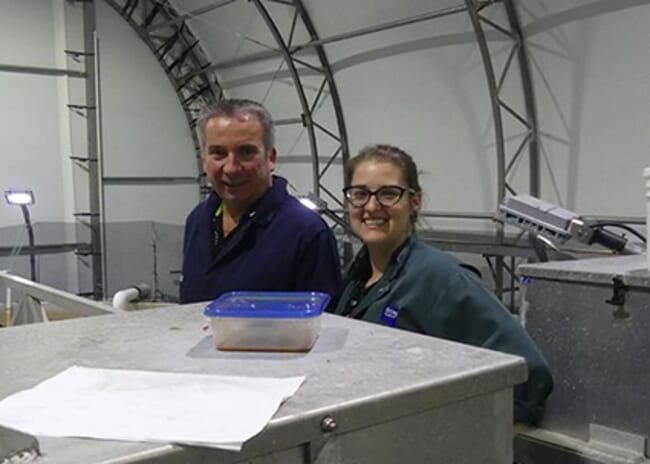In CrtlAQUA’s recently published annual report, the consortium pays tribute to Mathisen, who sadly passed away last September. As well as being the manager of Grieg’s freshwater facility in Campbell River, and the technical adviser for all of Grieg Seafood’s freshwater facilities, Mathisen was the chairman of CtrlAQUA SFI, from its inception in 2015 until his passing in 2019.

© Grieg Seafood
The report explains that, even before any results of the CtrlAQUA project about optimal production regimes had been published, Mathisen was implementing the knowledge at the Grieg Seafood RAS facilities in Canada, in particular in relation to light regimes and water quality, which he enthusiastically conveyed to the project partners during CtrlAQUA's annual meeting in May 2019.
"I am very interested in telling you about how we implemented this innovation in our production, because that is what CtrlAQUA is all about," Mathisen told those gathered at the meeting.
Mathisen wanted to show how a rapid impact of innovations in one's own business could be achieved if one paid attention and that innovation in an SFI is most often knowledge, rather than something you can actually put your hands on.
As the manager of a freshwater facility in Canada, Mathisen wanted to deliver large, robust post-smolt to sea farming, and – following promising preliminary research as part of the CtrlAQUA project, chose to test out salmon production with 24 hours of light and salt water in a separate production batch in 2017, with some adaptations.
Grieg started testing 24 hours of light on fry in March. At a size of around five grams, they introduced 4-5 ppt (parts per thousand) of salt into the water, and the fish's growth increased dramatically. At a size of around 60 grams, they introduced 12 ppt of salt (sea water has about 30 ppt of salt). The fish still grew well, as expected.
At the end of 2019, production manager Arvid Pedersen at Adamselv in Finnmark said that they had a close dialogue with Mathisen regarding the hypothesis, and that they tested this more or less in parallel with both Grieg's operations in Canada and CtrlAQUA.
"And it was very good that we could rely on empirical scientific data from CtrlAQUA when discussing this," Pedersen said. Grieg Seafood has also produced some groups at its facility in Trosnavåg, Rogaland, with traditional light management and some with 24 hours of light right up until delivery in 2019. They monitor these groups closely during the sea phase, especially with regard to sexual maturity.
"There is no doubt that we achieve better growth at our facilities now. It appears as if this continues in the sea, but it is still a little early to draw any conclusion. We will continue with the same light strategy in 2020, and we will eventually see what is right based on the results from the sea phase," said Pedersen.
In Canada, Grieg now practices the 24-hour light regime at all of its RAS divisions.
On behalf of the CtrlAQUA members, Nofima’s Reidun Lilleholt Kraugerud explains: “As a very active partner in CtrlAQUA, Frode Mathisen was always looking for useful results like this. He is described by the partners in CtrlAQUA as someone who always sat in the front row paying attention, who was inclusive, who shared his experiences and who was interested in the major issues in the CtrlAQUA project and aquaculture in general. Frode Mathisen will be remembered as a dedicated chairman of CtrlAQUA and an active disseminator of research and the fish farmer's perspective."
About CtrlAQUA
CtrlAQUA is a centre for research-driven innovation (SFI), which shall develop technological and biological innovations that will make closed-containment aquaculture systems a reliable and economically viable technology in aquaculture. Nofima is the host institution, and there are six research partners from Norway, Sweden and the United States, as well as 14 industry partners. CtrlAQUA is co-financed by the Research Council of Norway and its partners and is scheduled to operate from 2015 to 2023.



